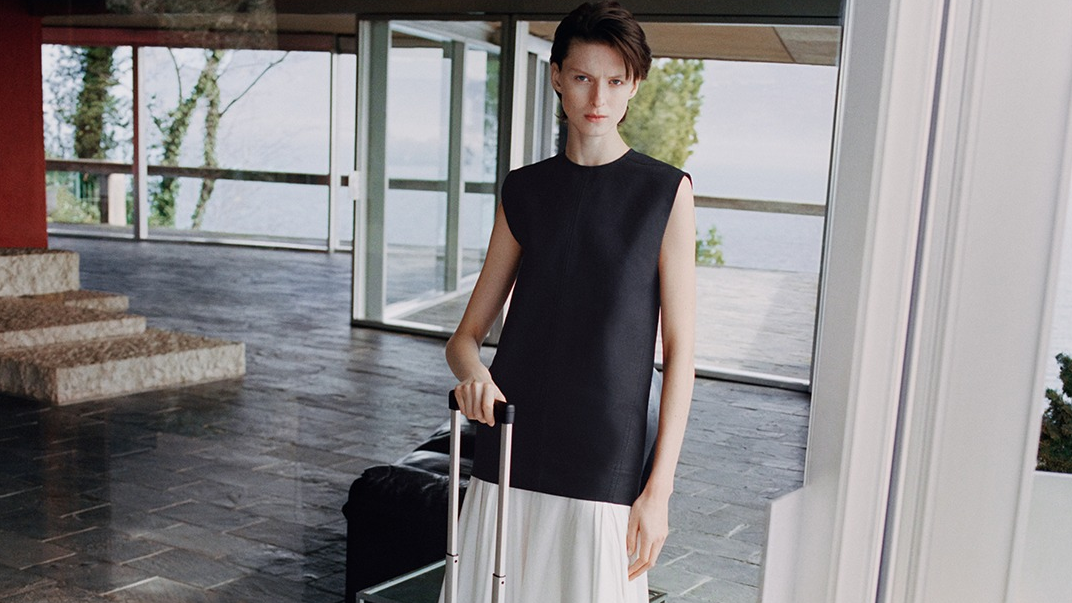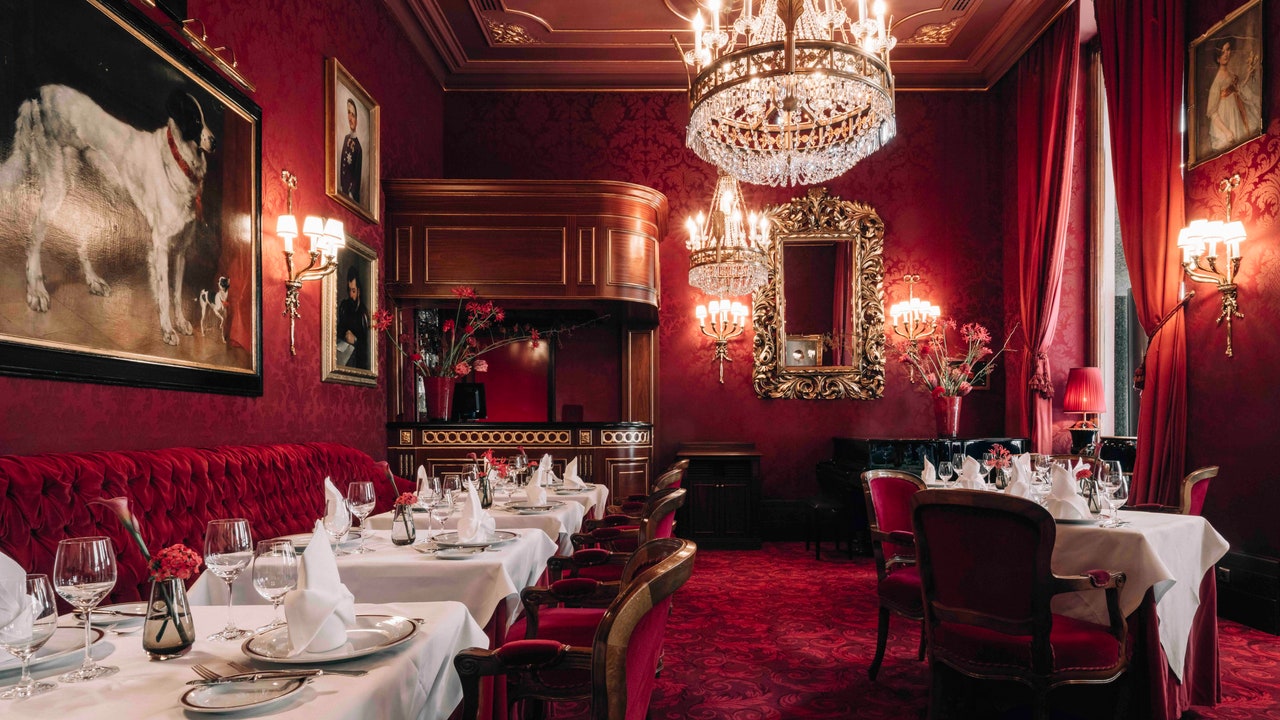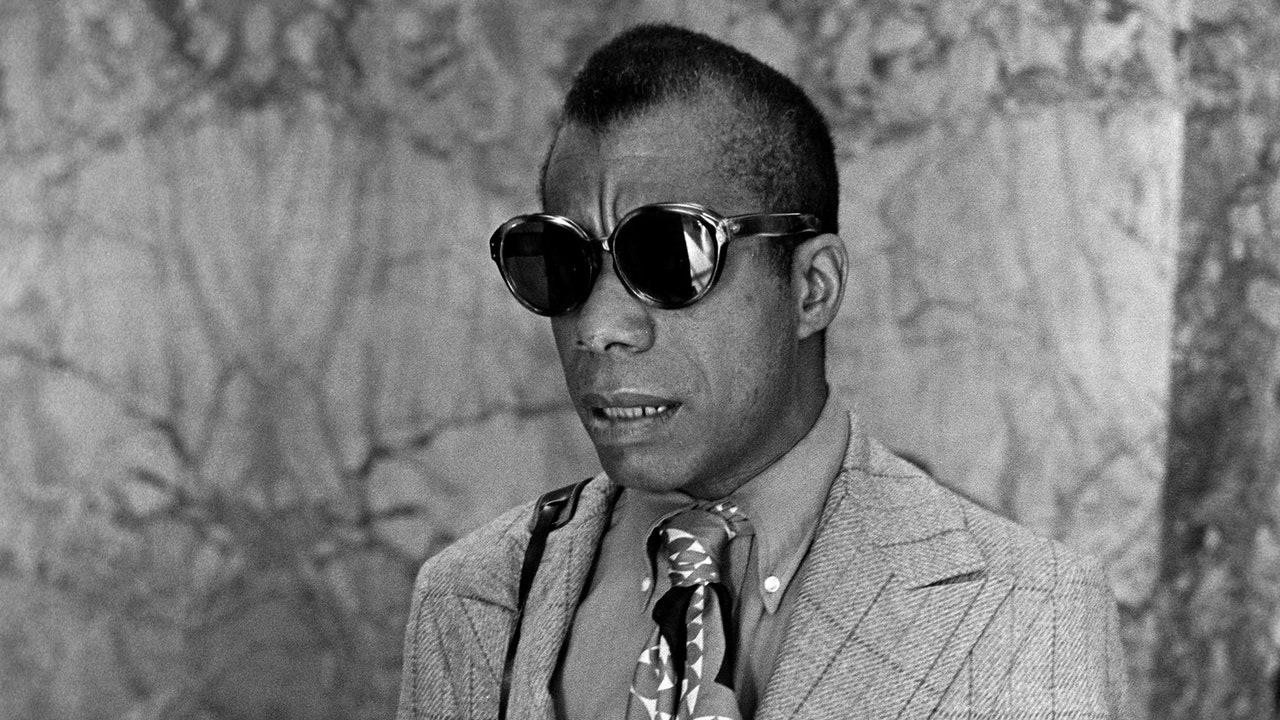
All products featured on Vogue are independently selected by our editors. However, we may earn affiliate revenue on this article and commission when you buy something.
More so than any of the travel accessories a trip requires, a lot can hinge on the suitcase. To travel smart is to invest in the best luxury luggage brands—because a well-made suitcase can last for decades. But as Vogue’s senior living writer Elise Taylor can attest, a luxury suitcase doesn’t need to be precious. “There’s always such a fine line with luggage for me,” she says. “I’m not a ‘luxury’ traveler. I fly economy and take public transportation daily…but I travel enough that I have to have a suitcase that lasts.”
Vogue’s Favorite Luxury Luggage Brands:
This staying power is what sets luxury suitcases apart from the rest. Investing in quality luggage makes prepping for (and reaching) your destination all the better. A lightweight steel case might mean you can pack a bit extra and avoid an overweight baggage fee. The eye-catching rollaboard from Calpak in a cheerful color will ensure no one else mistakes their luggage for yours. And the nostalgia-inclined will delight in leather-trimmed cases from Steamline, Globe-Trotter, and T Anthony.
Ahead, Vogue breaks down the best luxury luggage brands for travelers, from heritage labels to buzzworthy direct-to-consumer brands.
Co-founded by Indré Rockefeller (a Vogue alumni) and Andy Krantz in 2016, Paravel is one of the few luggage brands that is as stylish as it is sustainable. Take, for example, its Aviator case—its shell is made of a recycled polycarbonate material, the lining is woven with fibers sourced from recycled plastic water bottles, the handle is composed of recycled aircraft-grade aluminum, and it all zips together with a recycled zipper. In addition to luggage, look to the brand for Dopp kits, packing cubes, and all variety of travel essentials inspired by Rockefeller and Krantz’s jet-set habits. Vogue’s senior shopping editor Talia Abbas has the Aviator Carry-On in black and white, and uses it for both short weekends and longer weeks away. “I was a little hesitant choosing white at first, but it’s not in-your-office obvious, and the scuffs are surprisingly minimal. The hard shell wipes down easily, too for when it has to go back into the closet!”
If you’re looking for heritage, quality, and craftsmanship, Rimowa—founded in 1898—is the just the ticket. With cases crafted almost entirely of lightweight but sturdy aluminum and a patented multi-wheel system, Rimowa caters to the no-nonsense traveler looking for slick functionality. (Celebrity fans of the brand run the gamut, from Rihanna to Martha Stewart.) And as of late, the company is finding ways to infuse a bit of fashion into its heritage designs; recent collaborations include Off-White, Supreme, Daniel Arsham, and Dior, and most recently, Rimowa released a magnetic “luggage harness” that can be strapped over various suitcase sizes to streamline your hand-carry items.
Though Away has only been around for eight years, the New York-based brand has left its mark on the world—just visit any airport to see for yourself. Though Away was initially founded on its luggage’s ability to recharge your iPhones, the brand has expanded into a full range of suitcases—batteries not always included! You can’t go wrong with any of the products offered by this direct-to-consumer brand, which names everything in the most helpful of ways: The Carry-On, The Bigger Carry-On, etc.
Before Nicolas Ghesquière, and way before Marc Jacobs, Louis Vuitton was a maker of travel trunks. In 1854, Mr. Louis Vuitton had the novel idea to make trunks flat and rectangular (previously, they featured rounded tops) so that they could be easily stacked—the rest is history. Anyone who has caught Vuitton’s roving exhibitions dedicated to travel, Volez, Voyagez, Voguez, knows the extent of the maison’s dedication to the art of travel. Today, the brand continues to craft some of the finest pieces of luggage. Most often, these bags are splashed in Vuitton’s monogram or Damier Ebene canvas textiles.
Born in 2005, Steamline luggage was founded on nostalgia for the bygone heyday of travel. Think safari-ready leather travel trunks but with all the bells and whistles of a modern-day case. Its range of luggage includes vintage-esque rollaboards and a lovely collection of hat-box-shaped cross-bodies and cosmetics cases.
Named after Peru’s national symbol (a ceremonial, decorative knife), Tumi was founded in New Jersey in 1975. Since then, the brand has prided itself on technology-first design, most notably their black ballistic nylon travel bags. Durability and functionality are at the core of their design principles, a quality that appeals to Vogue’s Elise Taylor. “One year I broke three (yes, three!) weekender bags because I kept buying cheap ones I saw online. So I invested in Tumi’s continental carry-on.” Despite the hefty price tag, she’s a self-proclaimed happy customer. “It’s holding up remarkably well considering what I put it through—like overhead bin compartments it is way too big for (not the fault of the suitcase but rather because I’ve overstuffed it with random clothes), the cargo hold of Greek island ferries, and the chaotic luggage rack of the LAX-it bus.”
Nearly everything from July, an Australian-based brand, is customizable. Bubble leathers and bold-colored graphic monograms can help to set your case apart from your fellow passengers. Plus, this brand is perfect for those carry-on-only packers who want to get the most out of their single bag; July celebrates its latest release as being the lightest carry-on on the market.
Globe-Trotter may look as though its riffing off of old-fashion luggage wares, but really, its dipping into its own archive for design inspiration. Founded in Germany in 1897, the company eventually moved to the U.K. in 1932, where its been producing leather-based luggage by hand for almost a century. Famous Globe-Trotter owners of yore include Winston Churchill and Queen Elizabeth, with contemporary celebrity customers including Kate Moss and Angelina Jolie.
With star-studded campaigns starring the likes of Ryan Gosling plus Bad Bunny and Kendall Jenner, Gucci’s heritage as a luggage atelier enters a new era. For polished and poised travel, the Savoy line is a favorite—the trolley’s GG Supreme canvas was inspired by an archival design from the 1930s and translates beautifully to the collection of covetable suitcases.
This British brand has been around since 1914, but underwent a rebrand last year, focusing on functional, contemporary design that reflect the brand’s expert craftsmanship. Each suitcase also comes with a lifetime warranty.
Little has changed about the way Bric’s crafts its signature leather collections since the company was founded in 1952 by Mario Briccola. Today, the leather goods are still produced at family-run factories in Como. Even the label’s hard polycarbonate cases feature leather trim details to honor Bric’s artisanal heritage.
There’s an iconic photograph showing Marilyn Monroe boarding an airplane, looking ever the portrait of wanderlust glamour. In her hand is a case by T Anthony, and it’s the brand’s heritage that keeps its loyal customers coming back. Since the label’s founding in 1948, the iconic New York luggage maker has prided itself on its ethically and responsibly designed wares.
Created by one of the founders of Tumi, Roam is a brand of luggage that leans on the personality of travelers to determine its assortment. The majority of its products are customizable, with the ability to mix and match colors. Plus, all of Roam’s luggage is crafted in the U.S.
The nostalgic set who don’t want to carry leather-strapped hat boxes might find what they’re looking for in Floyd, a brand dedicated to skateboarding and Venice Beach culture of the 1970s. Founded in 2019 by two Munich-based creatives, the brand brings the groove back to flying with its retro-hued Makrolon polycarbonate cases that can be paired with interchangeable wheels (inspired by those of skateboards, of course).
Founded in Los Angeles in 1989, Calpak sets itself apart with stylish luggage at a great price point. Known for slick hard-case bags, Calpak’s designs have an air of playfulness about them. In 2016, the brand offered an assortment of faux-marble luggage and it also collaborated with hairstylist Jen Atkin on a case in a distinct shade of red—excellent for spotting on the baggage carousel.
Everything You Should Know
How we chose these luxury luggage brands
Leaning on our deep understanding of luxury and the factors that justify an investment (including elevated materials, practical details, and strong design), we curated a list that prioritizes both form and function. The final edit highlights designers with a longstanding reputation, as well as newcomers who have established themselves as worthy additions to the travel industry.
What size suitcase should I buy?
The right size suitcase depends on the length and type of journey you’re embarking on. A carry-on is always useful to have for quick trips (or for frequent fliers who hate waiting at the luggage carousel). Additionally, a large checked luggage will ensure you’re always prepared no matter the occasion.
Are hard shell suitcases better than soft?
Whether you choose a hard shell suitcase or soft is more a matter of preference than better versus worse. Hard shell suitcases offer more protection and are easier to clean, while soft shells are more flexible and typically include an exterior pocket.
Should I use a luggage cover?
This practical layer that wraps around your luggage can help protect against the scuffs, scratches, and bad weather it encounters from its journey to and from the airplane. If you’re determined to keep the exterior of your luggage in pristine condition, a cover might be a good idea. (Tip: Go for a clear luggage cover, like Calpak’s, so you can maintain the original look of your suitcase.)
#Luxury #Luggage #Brands #Market






